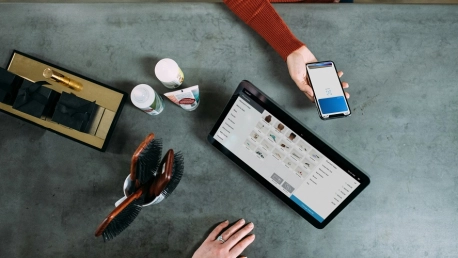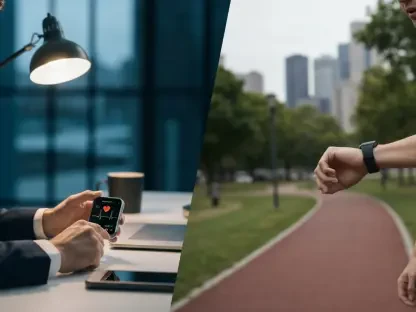The rise of new phone technology, including 5G, is speeding up the shift to mobile commerce. Society is very focused on mobile devices and relies on them more than ever, which just goes to show how smartphones are shaping and affecting our mental health.
On average, people use their mobile phones for over three hours per day. We nervously tap our phones every 10 minutes, finding excuses like checking emails or browsing for something we really need. So, where do we spend our time when we scroll through our apps? How easy is it to influence our shopping habits? Read on to see what mobile e-commerce trends are dominating 2024 and how you can reach your shoppers.
The four main types of e-commerce apps
- Mobile payment applications
- Mobile commerce apps
- Social commerce
- QR codes
People prefer mobile payment apps on their smartphones when they need to send money to family and friends. Also, for most goods and services, but not all. Some popular payment apps include:
- PayPal
- Venmo
- Xoom
Most mobile devices come with a built-in feature for storing cards, such as:
- Apple Pay
- Samsung Pay
- Google Pay
In 2021, Worldpay found that digital and mobile wallet payments made up 49% of online transactions worldwide. The use of m-pay is expected to increase to 53% by 2024, and the entire market for mobile wallets is predicted to be worth 350 billion USD by 2026.
1. Harnessing Mobile Shopping Apps for Growth
More than half of US shoppers use mobile retail apps to find out more about products. This is vital information for Shopify store owners, though nowadays almost every large social media platform has its own online storefront. While it is still advisable to have a mobile-friendly website, it’s not enough, unfortunately. In 2024, having a mobile shopping app is unavoidable.
The numbers are clear: 85% of consumers prefer mobile apps to mobile websites. Therefore, creating an app to showcase your products is a must to meet the needs and expectations of today’s buyers. It is no surprise that mobile shopping apps have higher conversion rates than mobile websites—an astonishing 157%.
If that’s not reason enough for you to run towards an app builder, or a social media platform with such a higher conversion rate, you are losing money in your e-commerce business. If you don’t act now, you will fall behind the competition by the end of 2024.
2. Analyzing Sales Impact from Smartphones and Tablets
As shown above, smartphone sales have become dominant. On average, every person orders about 102 USD worth of products, which is 10 USD more than the stats from mobile websites.
Most mobile devices fall into two categories: smartphones and tablets. According to Business Insider, smartphones are, again, prevalent for making purchases. They foresee that by the end of 2024, m-commerce sales from smartphones will reach 418.9 billion USD, while tablets will generate only 69.1 billion.
Tablet sales are decreasing compared to smartphone sales. Here are some percentages to represent how much tablet sales take part in all mobile commerce:
2019 – 18.2%2020 – 16.9%2021 – 15.9%2022 – 14.8%2023 – 14.1%
It’s important for online store owners to take note of the fact that when tablet sales decrease, it indicates an increase in smartphone purchases. These devices are commonly used for online shopping.
Understanding this decline and accompanying trends will influence how online shop owners communicate with customers. For instance, sending a push notification to a tablet about a flash sale might not be as effective as sending it to a smartphone. The tablet notification might not be viewed promptly, whereas the smartphone notification will be seen right away.
This doesn’t mean you should disregard tablet users. However, based on these trends, it’s clear that smartphone users will be the primary focus for m-commerce apps in 2024.
3. From Abandoned Carts to One-Click Buys
In 2024, the shift to shopping from mobile apps has made it easier to browse and shop for both our favorites and things we will never need again. However, online stores have always required a lot of information from visitors. It is customary that you have to enter your name, credit card number, card expiration and verification numbers, shipping and billing addresses, and email every time you want to buy something. But doing this on a small mobile screen remains inconvenient.
That is the main reason people abandon their carts when shopping on mobile sites. In fact, 97% of mobile site shopping carts are abandoned. But some other statistics say that only 20% of carts get abandoned. How is this possible if it’s the same device?
Here’s how: Mobile apps store your information using mobile credentials, so you don’t have to enter it every time. With one-click ordering, you can buy something in seconds. This is good for both the business and the customer. The business makes more sales, and the customer has an easier time shopping. When using an app, people spend twice as much as on a desktop or mobile website. To benefit from this, businesses need to create a mobile app. So, in 2024, more businesses will use this technology to make shopping easier.
4. The Rise of Shoppable Posts in Social Commerce
It is normal for most business owners to think that social media is the easiest way to promote and create brand awareness when that is where their audiences flock. However, real-life examples have shown that, traditionally, businesses struggle to convert social media traffic into sales. When you start to analyze, it is easy to spot the reason: It is difficult to guide people from an entertaining social media post to a whole new product page. No wonder, wouldn’t the change put you off as well?
Luckily, we have now been introduced to shoppable Facebook pages and Instagram shoppable posts. Even TikTok has its own shop. Easy, one-click features enable businesses to tag products in posts, not only simplifying the shopping process but also making it more attractive through colorful, interactive videos. Also, it bypasses the need to visit separate websites. And as we have already established, switching websites on mobile is annoying for most.
A recent study shows that brands that have embraced Instagram shopping have seen a significant increase in traffic and revenue. As shoppable posts gain traction, more brands are expected to adopt them, and consumers are likely to increase their purchases directly from social media posts.
5. Voice Search in 2024: Shaping the Future of Online Shopping
Now, voice search has entered the online shopping competitive arena. While people used to only employ voice search to get weather updates or to play music using their smart speakers, nowadays, voice assistants like Siri and Alexa regularly shop for their owners.
Voice search and shopping without typing are fairly new technologies that could reach 39.8 billion dollars worldwide in 2024. This growth is possible because around 40% of adults use voice search at least once a day. Plus, almost 20% of all mobile searches are now voice-based since almost half of US consumers prefer not to type when researching products online. In 2024, there are 8.4 billion active digital voice assistant units around the world, and experts predict this number will grow to 14.1 billion by 2027.
Final Thoughts
The rise of app integration stands out as a crucial factor in today’s m-commerce trends. To keep up with all this evolving technology and the quicksand market that has swallowed even the biggest of players, it is only wise to jump on this trend. After all, creating and maintaining a mobile app for your e-commerce platform comes relatively cheap and has the potential to yield high results. Especially since it is proven as a preferred shopping method for consumers in 2024. All signs point in the direction that one-click mobile shopping is here to stay. Take our advice and position yourself to succeed in the realm of mobile commerce in 2024 and beyond.









